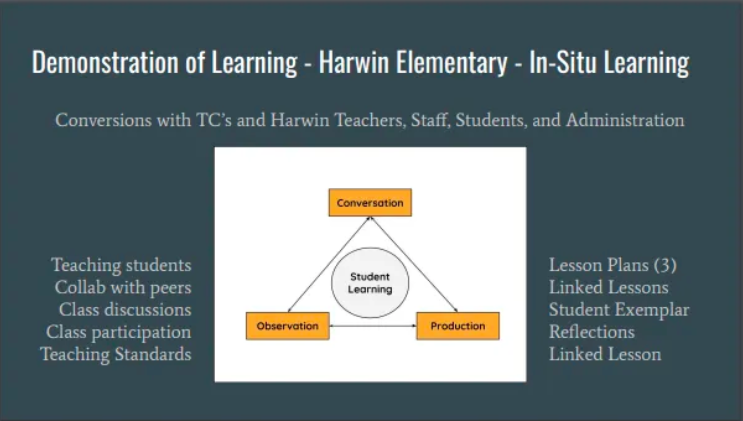Exploring Leadership: My First Day at Harwin Elementary
Walking into my first lesson in a three-part ADST unit on Leadership at Harwin Elementary, I was eager to see how the students would engage with the concept. The goal for the first lesson was to explore leadership qualities through group work, with students collaborating to create cloud maps. What I quickly realized, however, was that understanding how to motivate and assess the students effectively would be just as important as teaching the content.
Learning Through Observation

From the beginning, it was clear to me that in this class, building relationships was key to student motivation. As I observed students working in groups, it became evident that they were more engaged when they felt valued and seen. This reminded me that meaningful learning happens when students feel connected, not just to the material but to the people around them. The first lesson was not just about leadership, it was about getting to know the students and figuring out what sparked their interest.
I and my group realized we needed to pivot and incorporate more activities to deepen our understanding of the students’ backgrounds and build stronger relationships. One activity we incorporated was “Stand Up If…”, which encouraged students to share aspects of their lives in a fun, low-pressure way. This approach not only helped me learn more about who the students were but also fostered a sense of community within the classroom.
Formative and Peer Assessment
One of my biggest takeaways from this lesson was how beneficial formative and peer assessments can be. Instead of focusing on polished final products, I and my peers emphasized collaboration and group reflection. This allowed me to see how students processed information and supported one another. Many students who were hesitant to participate individually felt more comfortable sharing their ideas within a group. This approach created a more inclusive environment where students could take risks and learn without the pressure of a formal grade. During the cloud map activity, my peers and I were also able to incorporate verbal formative feedback in a way that did not specifically target individual students.
Differentiating for Diverse Learners
The class included students with autism, Fetal Alcohol Spectrum Disorder (FASD), and other learning exceptionalities. My group and I quickly realized that a one-size-fits-all approach to assessment would not work. By grouping students, it encouraged peer learning and created opportunities for everyone to contribute based on their strengths. This not only made the assessment process more equitable but also helped boost students’ confidence as they realized they had something valuable to offer.
Reflection and Ongoing Questions
The first day at Harwin Elementary taught me that assessment is about more than just measuring knowledge. A key aspect of assessment is about understanding students and creating an environment where they feel motivated to learn. While formative and peer assessments helped foster collaboration and reduce anxiety, I was left with lingering questions. How can I approach individual summative assessments in a way that doesn’t add to students’ stress? Finding that balance remains a goal as I continue to refine my teaching practices.
Reflecting on this experience, it is clear to me that building relationships, embracing creativity, and adapting assessment strategies are essential to facilitating a positive learning environment.
